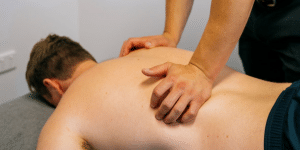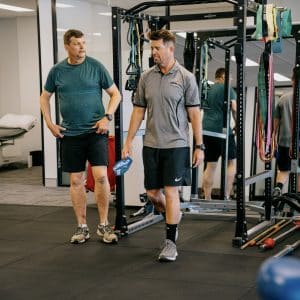What are Cervicogenic Headaches?

Cervicogenic headache means a headache originating from the neck. Along with tension headaches and migraines, cervicogenic headaches are common, and although there is often crossover in symptoms (after all, they all cause pain in the head!), each type of headache has some distinguishing features.
Cervicogenic headaches are often characterised by:
- Pain originating from the base of the skull that may extend to the forehead, temples and behind the eyes
- Headache provoked by neck movement, or awkward or sustained head postures
- Reproduction of headache due to direct pressure at the neck
- Usually associated with a recent history of neck pain or injury
- Restriction in the range of motion of the neck and/or stiffness, with associated muscle spasm
- Usually one sided, and consistently on that side
What causes Cervicogenic Headache?
By definition, cervicogenic headaches arise from neck pain, injury, or other dysfunction. Typically, they occur due to tissue irritation at the level of the 1st, 2nd or 3rd cervical vertebrae (the upper joints of the neck). It is thought that the headaches are a form of referred pain from these tissues.
The diagrams below illustrate the distribution of referred pain (to the head, and elsewhere) according to the vertebral level of the original tissue irritation.


How can physiotherapy help with heachaches?
Your physiotherapist has a number of techniques to help you reduce your pain.
Manual therapy: may include mobilisation of the neck, particularly of the C1-3 joints. Your physiotherapist may use these techniques to address any movement restrictions either generally or at a particular bony level. Some of these techniques can actually be taught so that you can assist your own treatment as part of a home exercise program.
Posture: like most musculoskeletal problems, habitual posture plays a very important role in the management of cervicogenic headache. Slouched sitting and standing tends to push the head forward, increasing the load on joints in the neck and requiring the surrounding muscles to work harder to hold the head upright.

During treatment, your physiotherapist will guide you on ideal posture which will form an important part of your self-management. You should notice that improving your posture changes the frequency, severity, and intensity of your headaches. As a general rule, try and imagine a series of markers on your ear, tip of your shoulder, and your hips, as pictured in the second picture above. Ideally these should all be in a vertical line. This may feel awkward at first but will feel better as you get used to it.
Exercises: include stretches which can alleviate tension in the muscles (which is often as a result of poor posture). Your physiotherapist may also introduce exercises that specifically target the smaller supportive muscles around the neck.
Having an appropriate home exercise program which supports postural education and manual therapy is the cornerstone for the long term resolution of these problems.
A stretch that can help relieve tension in painful muscles that connect from your neck to the shoulder is pictured below. Place your hand behind your back and gently tilt your head away from that shoulder. The other hand may gently apply extra pressure to the head.
Another option is the second stretch pictured below which involves bringing your chin to your chest and applying gentle pressure from behind.
Hold each stretch for at least 20 seconds. Repeat 3 times. Stretches are meant to feel ‘tight’ but not painful, and you should stop if discomfort occurs and consult your physiotherapist.

If you are experiencing headaches or neck pain, please contact us here or book an online appointment






